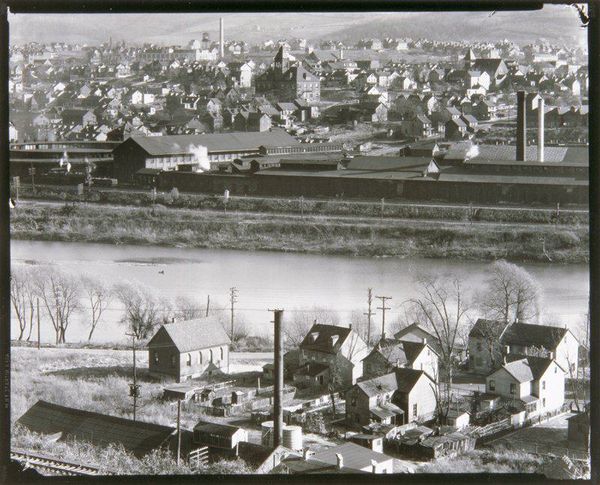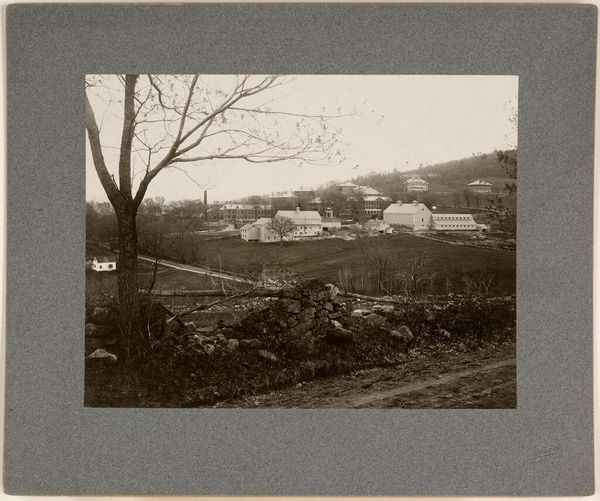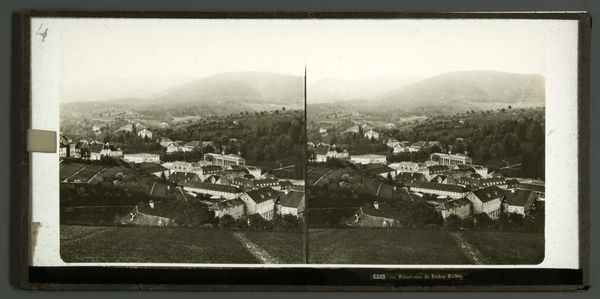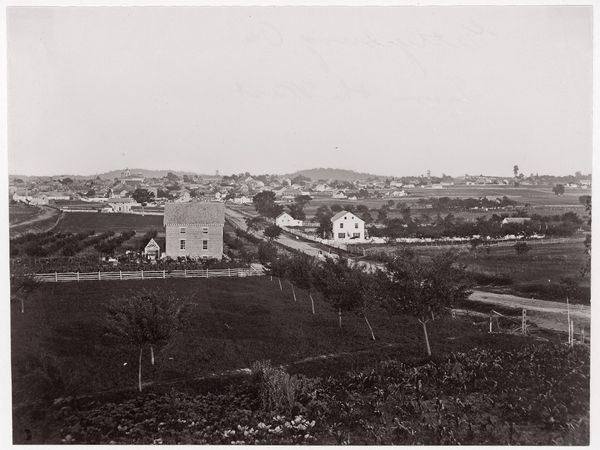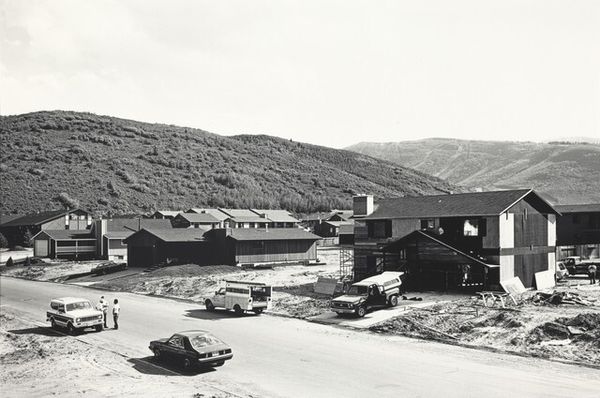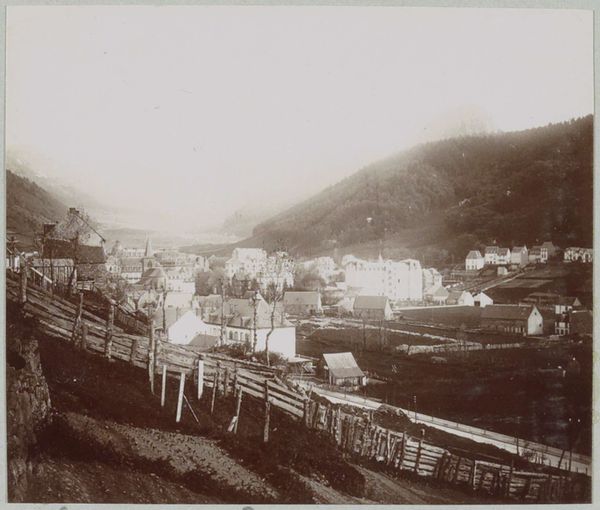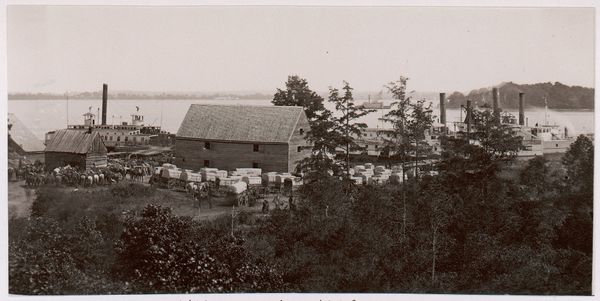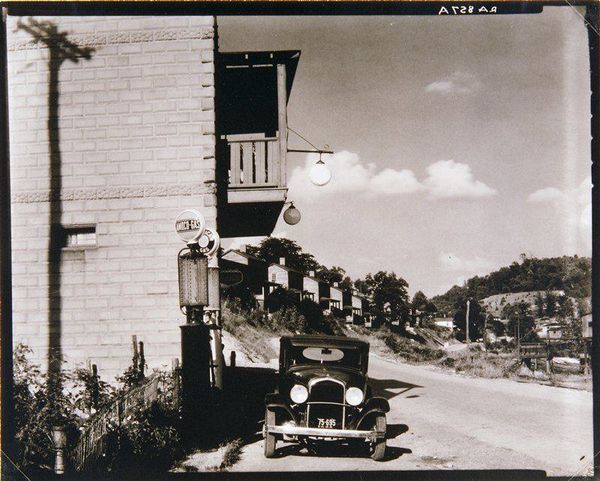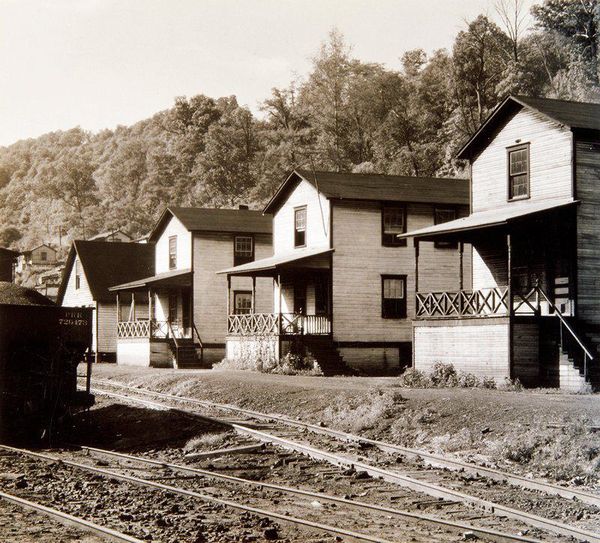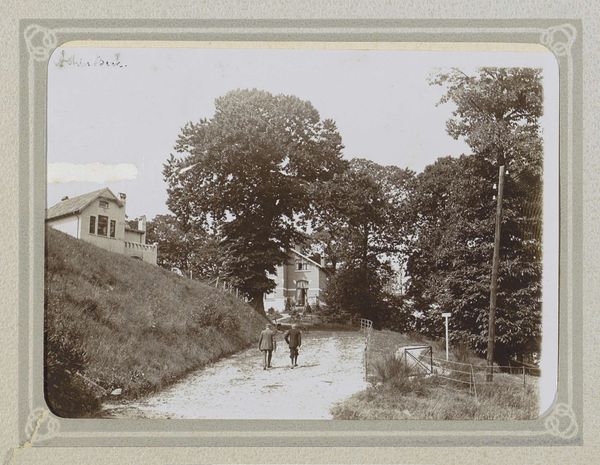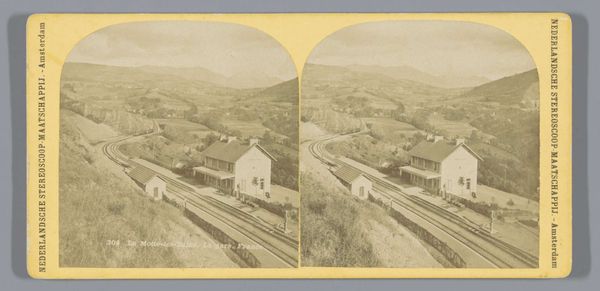
gelatin-silver-print, photography, gelatin-silver-print
#
gelatin-silver-print
#
landscape
#
photography
#
gelatin-silver-print
#
united-states
#
cityscape
#
realism
Dimensions: 7 1/2 x 9 1/2 in. (19.05 x 24.13 cm) (image)7 15/16 x 9 15/16 in. (20.16 x 25.24 cm) (sheet)
Copyright: No Copyright - United States
Curator: Walker Evans’ “View of Easton,” a gelatin silver print from 1935, offers a layered look at a Pennsylvania town. Editor: It feels bleak, almost haunting. The tones are so grey, and that stark composition emphasizes the town’s uniformity. Is it meant to be critical? Curator: Evans was working during the Depression; the social context is paramount. He was documenting America, trying to show what was happening to its people. Editor: So the relentless repetition of houses climbing that hill… that’s the key? Like a visual echo of economic hardship? The identical homes a kind of metaphor? Curator: It certainly speaks to a kind of forced conformity born of necessity, yes, and the limitations of opportunity in the period. But look also at the details - the aged car, the rough textures of the buildings. He’s pointing to the textures of lives lived in difficult times. Editor: The lack of people is striking, as if this town exists outside of time, or maybe its people are working so hard that they don't have time to appear for the picture. Curator: It adds to that sense of quiet desperation, absolutely. Evans' realism highlights the everyday lives and experiences of those impacted. Also, consider that "Easton" itself might be allegorical of "the East," the working class belt and beyond. It has a political message. Editor: There’s a strange tension – beauty even – in the harshness. It makes me think of other artists during the era who examined labor. Perhaps the beauty resides in Evans' skill itself. I admire its depth, but also can't stop feeling an intense weight. Curator: And it serves as a stark reminder that seemingly objective documentation always contains subjective perspectives, informed by social conditions. It challenges the narratives about that era that might ignore realities of poverty and lack of equity. Editor: Absolutely. This image makes those forgotten or ignored realities undeniably visible. It has an impressive staying power that sparks so many dialogues even today. Curator: Yes, a complex work that stays with you.
Comments
No comments
Be the first to comment and join the conversation on the ultimate creative platform.
